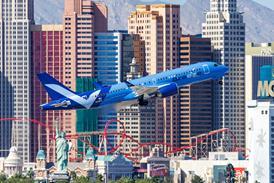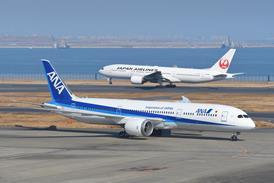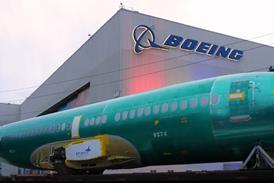GRAHAM WARWICK / WASHINGTON DC
Expanded database means current hardware can be used to reduce runway incursions
Honeywell is demonstrating the runway awareness and advisory system (RAAS), a software upgrade to its enhanced ground-proximity warning system (EGPWS), with certification due by the end of the third quarter. Two airlines, one US and one European, are evaluating the runway safety aid in flight simulators.
RAAS is a software-only means of reducing runway incursions. It is hosted in the EGPWS computer and uses an expanded version of the terrain awareness warning system's airport database. "Airport map displays will not be available for years. We can do something near-term that is simple, practical and affordable and uses equipment already on the aircraft," says demonstration pilot Markus Johnson.
The advisory-only system will be offered as an upgrade for "high-end" MkV and MkVII EGPWSs installed in airliners, regional jets and large business jets. Ultimately, MkVI and MkVIII systems fitted to smaller business aircraft, including turboprops, will get the capability, Johnson says. Around 16,000 EGPWSs are installed worldwide.
RAAS needs GPS to provide precise aircraft position, and an expanded and enhanced airport database. The EGPWS worldwide database includes runways of 1,070m (3,500ft) or longer. "We have to expand the database to include all runways, and ensure the accuracy of the data to a much higher degree - 20-30m," Johnson says.
Compiling and validating runway data will set the pace of the RAAS upgrade, and Johnson expects initial customers to be airlines serving a finite set of airports: "We will roll out by customer and by region." The runway-safety functionality will be enabled at more airports with each update of the EGPWS database, as data is validated, he says.
Johnson is touring the USA in a Beech King Air with a prototype RAAS, which has been viewed "with extremely high acceptance". Honeywell's aim is to require no changes to hardware. "We are still struggling with how to tell the pilot when RAAS is unavailable, as installing switches or lights would double the cost," he says.
RAAS tackles the incursion problem by improving the pilot's awareness of aircraft position relative to the runway. The system does not track other traffic - aircraft or vehicles - and taxiways are not included in the database because information is not available, says Johnson. Only aural advisories - not alerts or warnings - are provided.
The pilot is advised of runway identification when approaching and when aligned on a runway, with a distance-remaining prompt when the runway available is less than aircraft take-off roll. A taxiway advisory is issued if a 40kt (74km/h) ground speed is exceeded and the aircraft is not on a runway. Distance-remaining call-outs for rejected take-offs and landing roll-outs are available, with an end of runway prompt at speeds below 40kt.
Source: Flight International























